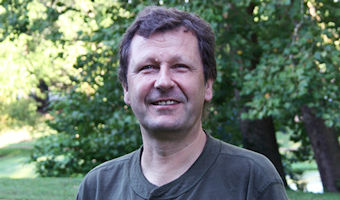The Condensed Matter & Surface Sciences Colloquium Series presents Peter Jung of Ohio University on “Slow Axonal Transport, Axon Morphology and Neuronal Function,” on Thursday, Sept. 8, at 4:10 p.m. in Walter 245.

Peter Jung
Abstract: The human brain with about 1011 neurons and about 1015 connections in addition to a neuroglia with even more cells such as astrocytes is the most complex system in the universe. The connections between neurons are established through neuronal axons, which carry electrical signals, i.e. the action potentials, to other neurons. Physiologic function relies on correct timing and hence speed of the electric signals, which, in turn, depend on axon morphology, which therefore must be precisely matched to its physiologic function.
Our collaborative research with the Brown-lab at OSU is focused on the mechanisms by which axon diameter and morphology is established and regulated, and how it affects neuronal function. To this end, we combine fluorescent life imaging methods to characterize the dynamics of the cytoskeleton of the axon, with mathematical modeling and computational analysis. Our morphological studies are supplemented with electrophysiological studies to establish relations between specific axon morphologies and neuronal function.



















Comments